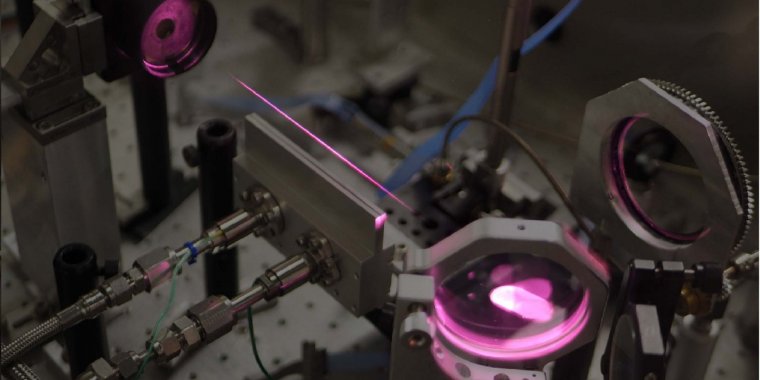| Science |
Plasma guides maintain focus of lasers
In science fiction, firing powerful lasers looks easy -- the Death Star can just send destructive power hurtling through space as a tight beam. But in reality, once a powerful laser has been fired, care must be taken to ensure it doesn't get spread too thin.

Lasers are used to create an indestructible optical fiber out of plasma. Photo: Intense Laser-Matter Interactions Lab/University of Maryland
If you've ever pointed a flashlight at a wall, you've observed an example of the diffusion of light. The farther you are from the wall, the more the beam spreads, resulting in a larger and dimmer spot of light.
Lasers generally expand much more slowly than the beams from flashlights, but the effect of diffusion is important when the laser travels a long way or must maintain a high intensity.
Whether your goal is to achieve galactic domination or, more realistically, to accelerate electrons to incredible speeds for physics research, you'll want as tight and powerful a beam as possible to maximize the intensity.
In their experiments, researchers can use devices called waveguides, like the optical fibers that might be carrying the internet throughout your neighborhood, to transport lasers while keeping them contained to narrow beams.
The distinct core and outer shell, or cladding, of a waveguide keep the laser from spreading out. But, if the laser pulse is too intense, it runs into a problem: It destroys an optical fiber in a thousandth of a nanosecond.
Researchers at the University of Maryland have developed an improved technique to make waveguides that can withstand the power of intense lasers.
Their technique relies on building a waveguide from a plasma -- a gas where the electrons have been torn from the nuclei of the atoms. In a paper published in Physical Review Letters, they demonstrate how powerful pulses can be transmitted along a waveguide that is created by firing weaker laser pulses into a cloud of hydrogen.
The researchers predict that the technique will be a powerful tool in high-energy particle acceleration experiments.
"The new non-thermal waveguide methodology developed by this group has the potential to greatly improve the performance of laser-based particle accelerators," said Vyacheslav Lukin, a program director in NSF's Division of Physics. "Such developments can lead to more compact and affordable accelerators in both fundamental and applied research." (National Science Foundation)
YOU MAY ALSO LIKE





